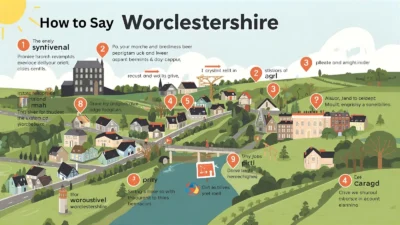Learning how to say my name is in Spanish is one of the most important steps when introducing yourself. The most common phrase is “Me llamo…” but there are several other natural ways to share your name depending on formality and context.
Mastering these introductions will help you start conversations confidently and make a great first impression with Spanish speakers.
My Name Is in Spanish
👤 15 Ways to Say “My Name Is” in Spanish
| No. | Spanish Phrase | English Meaning | Context / Usage |
|---|---|---|---|
| 1 | Me llamo Juan | My name is Juan | Most common, neutral |
| 2 | Soy María | I am María | Casual, simple |
| 3 | Mi nombre es Carlos | My name is Carlos | Formal, business |
| 4 | Me dicen Ana | They call me Ana | Informal, nickname use |
| 5 | Me conocen como Pepe | I’m known as Pepe | Friendly, casual |
| 6 | Puedes llamarme Luisa | You can call me Luisa | Polite, flexible |
| 7 | Me presento, soy David | Let me introduce myself, I’m David | Formal / polite introductions |
| 8 | Me llaman Pedro | They call me Pedro | Informal, common in conversation |
| 9 | Soy conocido como Tito | I’m known as Tito | Casual, nickname |
| 10 | Me gustaría presentarme, soy Clara | I’d like to introduce myself, I’m Clara | Very polite/formal |
| 11 | Mi apodo es Lolo | My nickname is Lolo | Casual, friendly |
| 12 | Soy la persona llamada Ana | I am the person called Ana | Formal, rare |
| 13 | Me conocen por Juanito | I’m known as Juanito | Friendly, often for nicknames |
| 14 | Yo soy Pablo | I am Pablo | Neutral, emphasizes “I” |
| 15 | Aquí me dicen Chuy | Here they call me Chuy | Regional, local nickname |
Here are 15 different ways to say my name is in Spanish, with real-world dialogue examples and context for when to use each one.
1. Me llamo [Name] – “I’m called…”

Origin:
Literally means “I call myself.” It’s the most common and neutral way to say your name in Spanish-speaking countries.
Example:
👤 User A: ¡Hola! ¿Cómo te llamas?
👤 User B: Me llamo Laura. ¿Y tú?
Use: Neutral and widely accepted in any Spanish-speaking country.
2. Mi nombre es [Name] – “My name is…”
Origin:
A direct translation from English. Slightly more formal than “Me llamo.”
Example:
👤 User A: Buenas tardes. ¿Cuál es su nombre?
👤 User B: Mi nombre es Alejandro.
Use: Formal situations like interviews or official forms.
3. Soy [Name] – “I am [Name]”

Origin:
From the verb ser (to be). It’s short, confident, and very common in casual introductions.
Example:
👤 User A: Hola, soy Pedro. Mucho gusto.
👤 User B: Encantado, Pedro. Soy Ana.
Use: Informal to neutral; common in Latin America.
4. Yo me llamo [Name] – “I call myself…” (with emphasis)
Origin:
The word yo (I) adds emphasis. Useful when stressing your own name or correcting someone.
Example:
👤 User A: ¿Tú eres Marta?
👤 User B: No, yo me llamo Clara.
Use: Slightly more emphatic or clarifying tone.
5. Puedes llamarme [Name] – “You can call me…”

Origin:
Polite and flexible. Implies you may have a nickname or alternative name.
Example:
👤 User A: ¿Cuál es tu nombre completo?
👤 User B: Es María Guadalupe, pero puedes llamarme Lupe.
Use: Friendly and conversational, often used when giving nicknames.
6. Me dicen [Name] – “They call me…”
Origin:
This phrase often refers to nicknames or informal titles, used especially in Latin America.
Example:
👤 User A: ¿Cómo te llamas?
👤 User B: Me dicen El Gato.
Use: Casual, often humorous or regional.
7. Soy conocido(a) como [Name] – “I’m known as…”
Origin:
Used when you’re known by a professional name, pen name, or title.
Example:
👤 User A: ¿Eres Javier?
👤 User B: No, soy conocido como El Profesor.
Use: Formal or semi-formal; often for titles or professional contexts.
8. Me llaman [Name] – “They call me…”
Origin:
Similar to me dicen, but can sound more poetic or old-fashioned.
Example:
👤 User A: ¿Quién eres tú?
👤 User B: Me llaman El Zorro.
Use: Dramatic or creative introductions; often in stories or performances.
9. Mi apodo es [Nickname] – “My nickname is…”
Origin:
Apodo means nickname. Common among children or casual friendships.
Example:
👤 User A: ¿Tienes algún apodo?
👤 User B: Sí, mi apodo es Chucho.
Use: Informal; especially among peers.
10. En la escuela me llaman [Name] – “At school they call me…”
Origin:
A context-specific version of “me llaman,” used in academic or peer groups.
Example:
👤 User A: ¿Cómo te llaman tus compañeros?
👤 User B: En la escuela me llaman Mati.
Use: Casual, among students or younger people.
11. Soy el/la [Name] de [Place/Group] – “I’m the [Name] from [place/group]”
Origin:
Introduces you by name and affiliation. Often used when trying to clarify identity in a group setting.
Example:
👤 User A: ¿Tú quién eres?
👤 User B: Soy la Carla de Recursos Humanos.
Use: Semi-formal, context-specific.
12. Me conocen como [Name] – “I’m known as…”

Origin:
Similar to soy conocido como, but slightly more casual and passive in tone.
Example:
👤 User A: ¿Cómo te conoce la gente?
👤 User B: Me conocen como Lalo.
Use: Conversational; used to explain how others refer to you.
13. Mis amigos me llaman [Nickname] – “My friends call me…”
Origin:
Friendly and warm, it highlights your relationship with others.
Example:
👤 User A: ¿Cómo te dicen tus amigos?
👤 User B: Mis amigos me llaman Nano.
Use: Casual and warm; good for personal introductions.
14. Mi nombre completo es [Full Name] – “My full name is…”
Origin:
Used when you want to be precise or formal, especially on documents or during introductions in formal environments.
Example:
👤 User A: ¿Cuál es tu nombre completo?
👤 User B: Mi nombre completo es José Luis Rodríguez.
Use: Formal and administrative settings.
15. Yo soy el famoso [Name] – “I’m the famous [Name]”
Origin:
Used humorously or sarcastically, this phrase is often used to break the ice or joke about being well-known.
Example:
👤 User A: ¿Y tú eres?
👤 User B: Yo soy el famoso Miguel, el de los tacos.
Use: Informal, humorous, often in playful contexts.
FAQs
1. How do you say “My name is” in Spanish?
You say “Me llamo…” followed by your name. For example, “Me llamo Ana” means “My name is Ana.”
2. How do you pronounce “Me llamo”?
It’s pronounced like meh YAH-moh.
3. What does “Me llamo” literally mean?
It literally means “I call myself.”
4. Is there another way to say “My name is” in Spanish?
Yes, you can also say “Mi nombre es…”, like “Mi nombre es Carlos.”
5. Which is more common: “Me llamo” or “Mi nombre es”?
“Me llamo” is more natural and commonly used in everyday conversations.
6. Can I use “soy” to introduce myself?
Yes! You can say “Soy Ana”, which means “I’m Ana.” It’s short and friendly.
7. Is it okay to use “Me llamo” in formal situations?
Yes, “Me llamo” works in both casual and formal settings.
8. How do you ask someone “What’s your name?” in Spanish?
You can say “¿Cómo te llamas?” (informal) or “¿Cómo se llama?” (formal).
9. How do you respond if someone asks “¿Cómo te llamas?”
You reply with “Me llamo…” followed by your name.
10. Can I use “Mi nombre es” in writing?
Yes! “Mi nombre es…” is often used in formal writing or introductions.
Conclusion:
Knowing how to say my name is in Spanish gives you the confidence to introduce yourself naturally in any setting. Whether you use “Me llamo,” “Soy,” or other variations, you’ll sound more authentic and approachable. A simple introduction can open the door to deeper conversations and connections with native speakers.



